Some of the most intimidating work that an authority having jurisdiction (AHJ) can encounter involves hazardous (classified) locations and what classification those areas will carry. It is critical that this be completed properly in order to assure the safety of the property and the public. The equipment used in a hazardous (classified) location is not cheap! With that being said, honesty from everyone associated with this project concerning what will be occurring, stored, or produced in these areas is very important.
The Fire Triangle
To develop an understanding of the hazards associated with the use of electricity in hazardous (classified) locations, a review of the components (oxygen, heat or ignition, and fuel) of the fire triangle is in order. All three elements of the triangle must be present in specific ratios for ignition and explosion to occur (see figure 1). Vapor density will impact the likelihood that an ignitible concentration will develop (see figures 2, 3, 4, and 5).
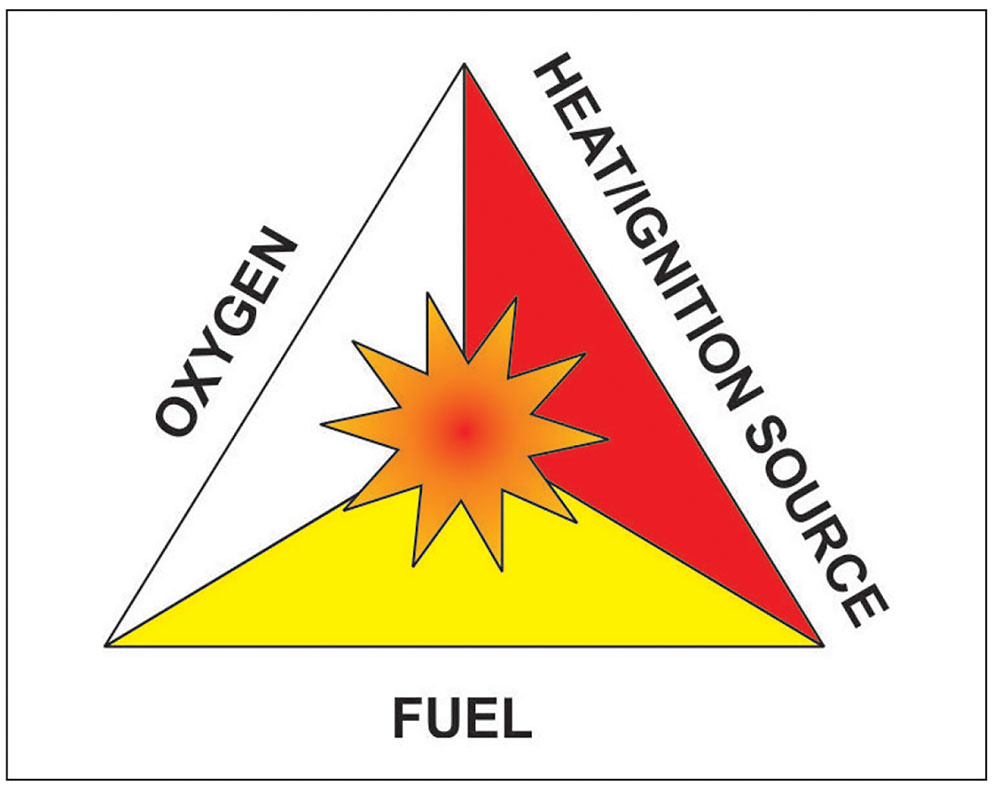
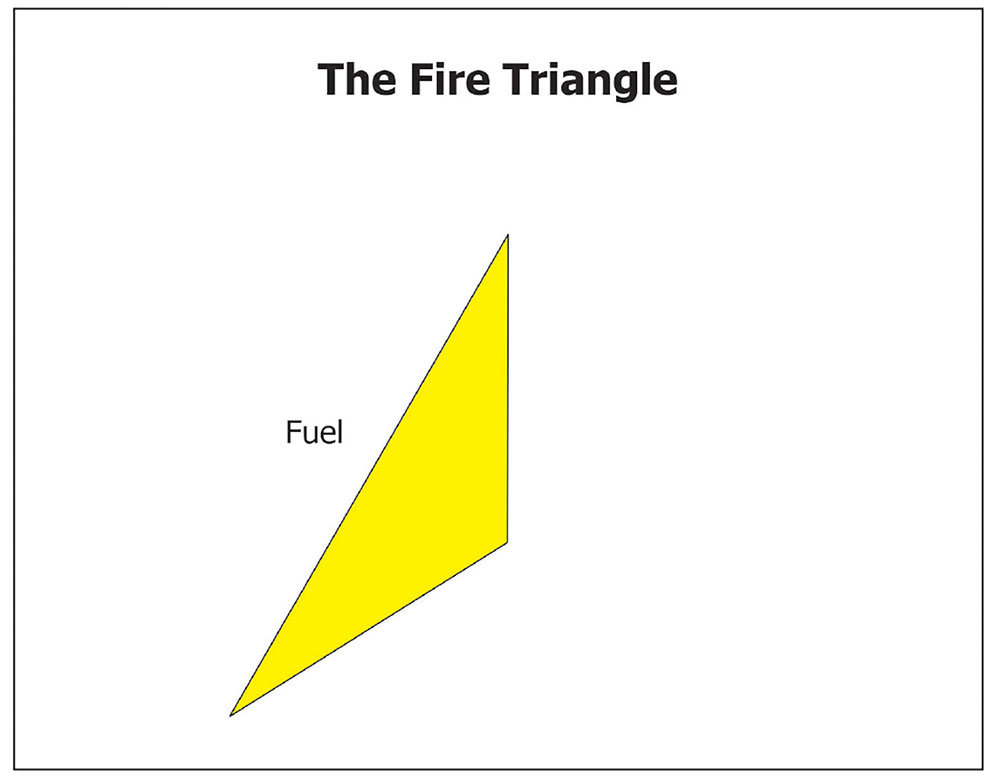
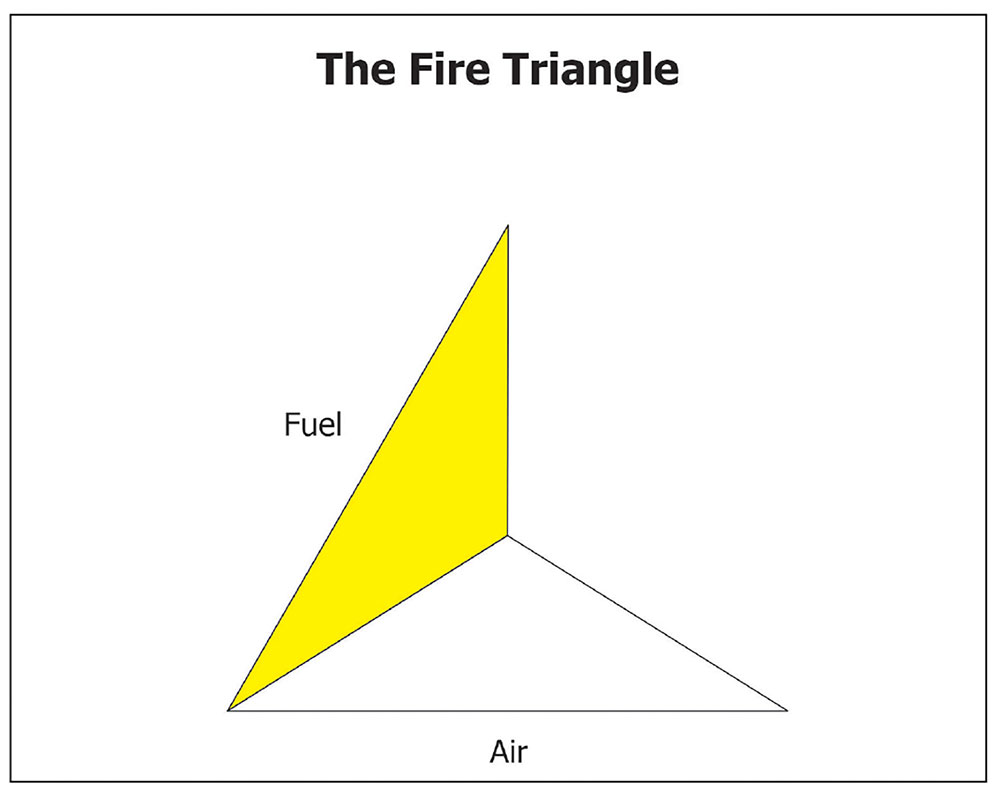
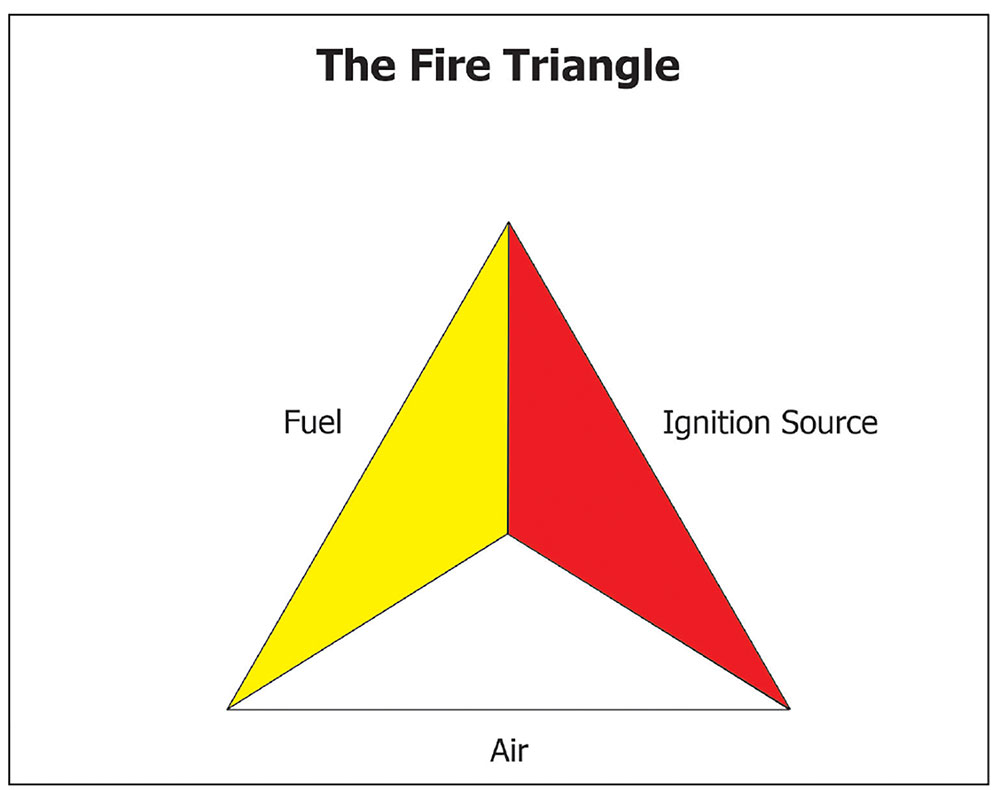
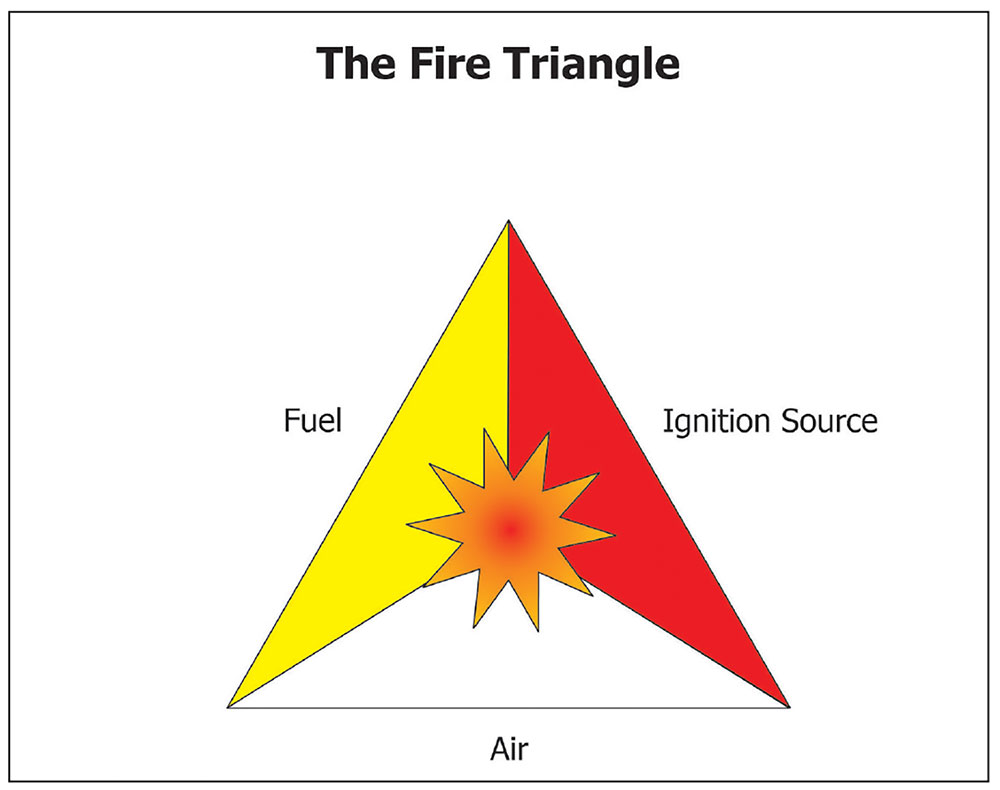
The heat or ignition source is the electrical system, although it could also be an open flame or other heat sources that exceed the ignition levels of the materials involved. The fuel leg of the triangle could be one or a combination of the various materials listed in the tables provided in NFPA 497–2017, Recommended Practice for the Classification of Flammable Liquids, Gases, or Vapors and of Hazardous (Classified) Locations for Electrical Installations in Chemical Process Areas or NFPA 499–2017, Recommended Practice for the Classification of Combustible Dusts and of Hazardous (Classified) Locations for Electrical Installations in Chemical Process Areas.
Requirements in standards related to hazardous (classified) locations are based on normal atmospheric quantities of oxygen. It should be noted that these standard requirements have not considered situations involving oxygen-enriched or oxygen-deprived atmospheres. Identifying those conditions is part of the risk assessment and analysis process when determining area classification.
The range of flammability needs to be considered when assessing area classifications. Not all fuel types are as volatile and must be considered individually. Take methane, for instance. The lower explosive limit (LEL) is 5, and the upper explosive limit (UEL) is 15. On a scale provided in figure 6, there is a specific range in which conditions exist for there to be a possibility of an explosion (between 5 and 15). Now consider another item such as hydrogen. It has an LEL of 4 and a UEL of 75. Hydrogen has a much broader flammability range where conditions exist for a possible explosion (between 4 and 75).
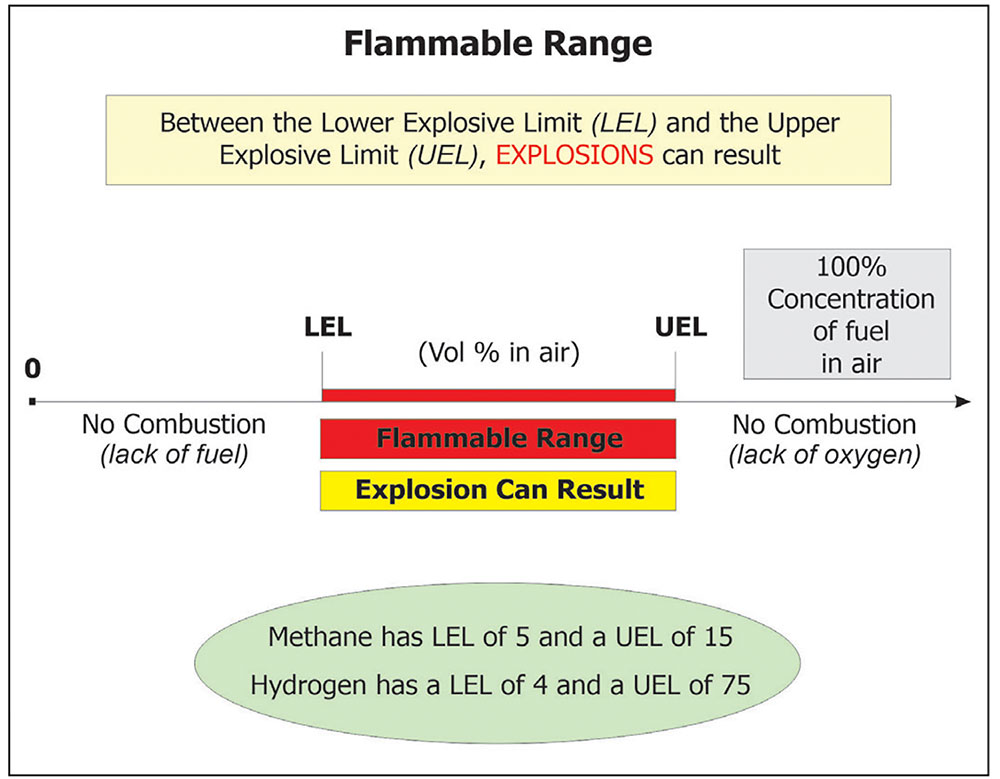
The Assessment Team
Area classification can be a very daunting task. It is not the responsibility of the AHJ to determine the classification of an area. The AHJ should not be determining the area classification as a “lone wolf.” The assessment should be conducted by a team of experts that bring various talents to the table (see figure 7). The AHJ may be part of this team but should be approving and enforcing Code rules to that classified area once the assessment team determines what that classification will be.
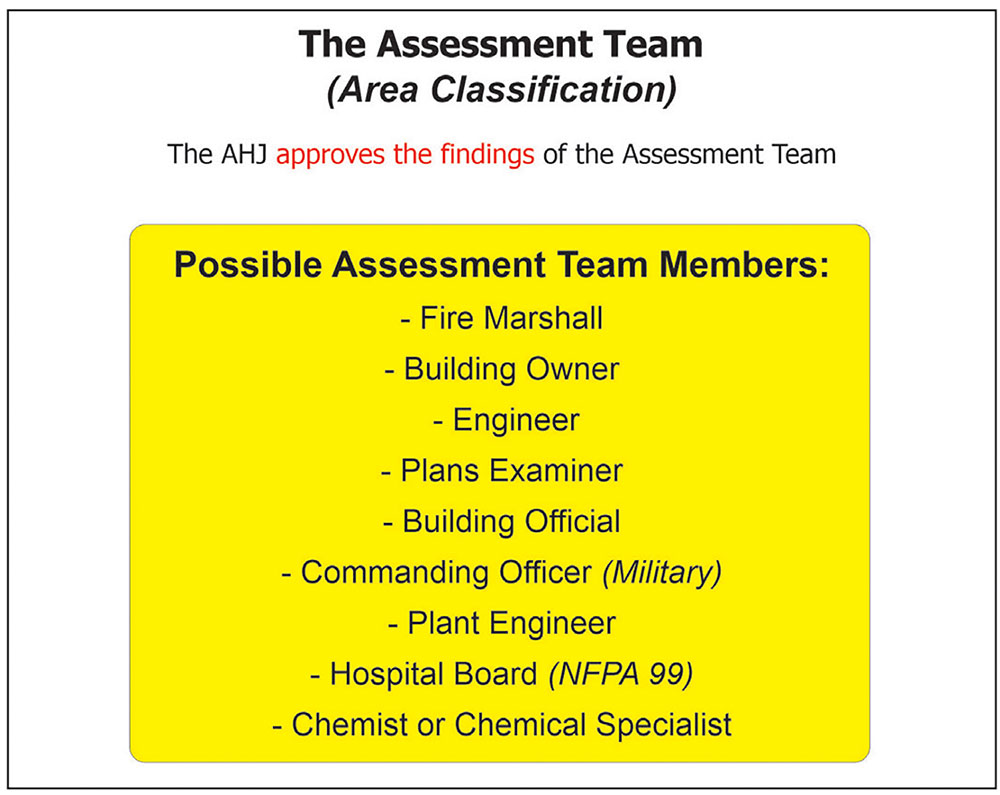
It is critical that full disclosure by the engineer or building owner is made about a particular building or area. Most are aware that specialized equipment is utilized in these classified areas and that this equipment will be much more expensive than ordinary electrical equipment. Being deceitful to save a few dollars put the structure and the public at serious risk if the right conditions present themselves.
Members of the assessment team should work together to determine the area classification. By using their knowledge and experience, the assessment should follow what some would consider a reverse NCAA basketball tournament bracket. Instead of working down to an eventual champion, the assessment team starts at the championship position and moves backward through the bracket (see figures 8, 9, and 10). Each level presents a particular question for the assessment team to consider.
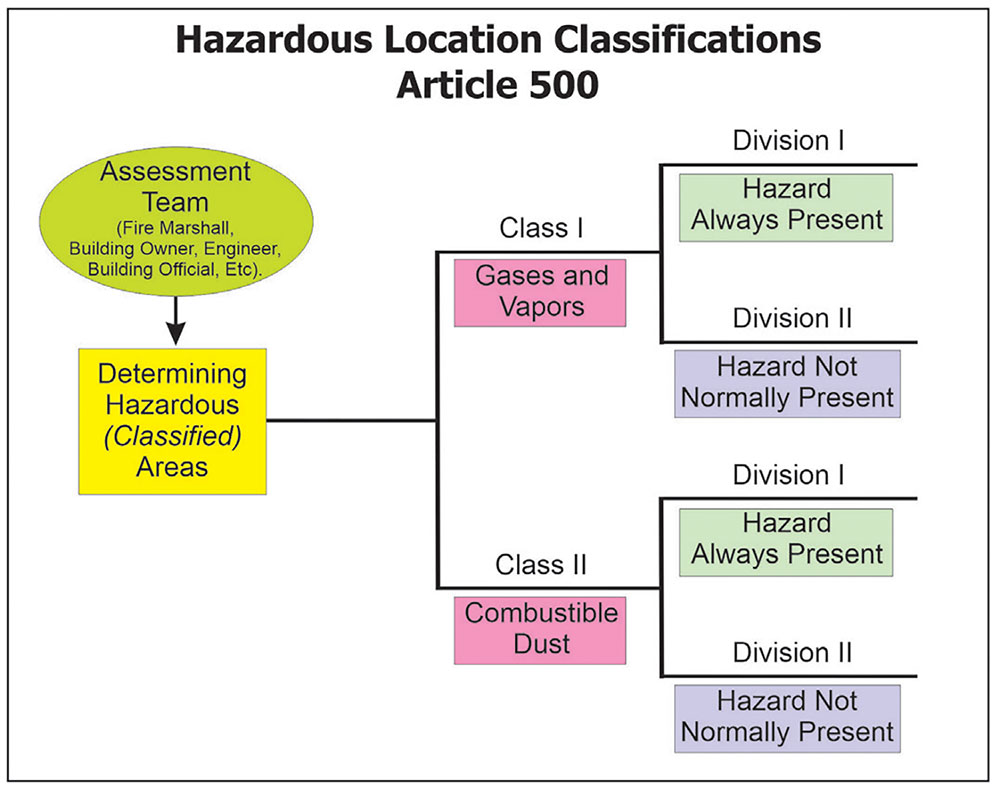

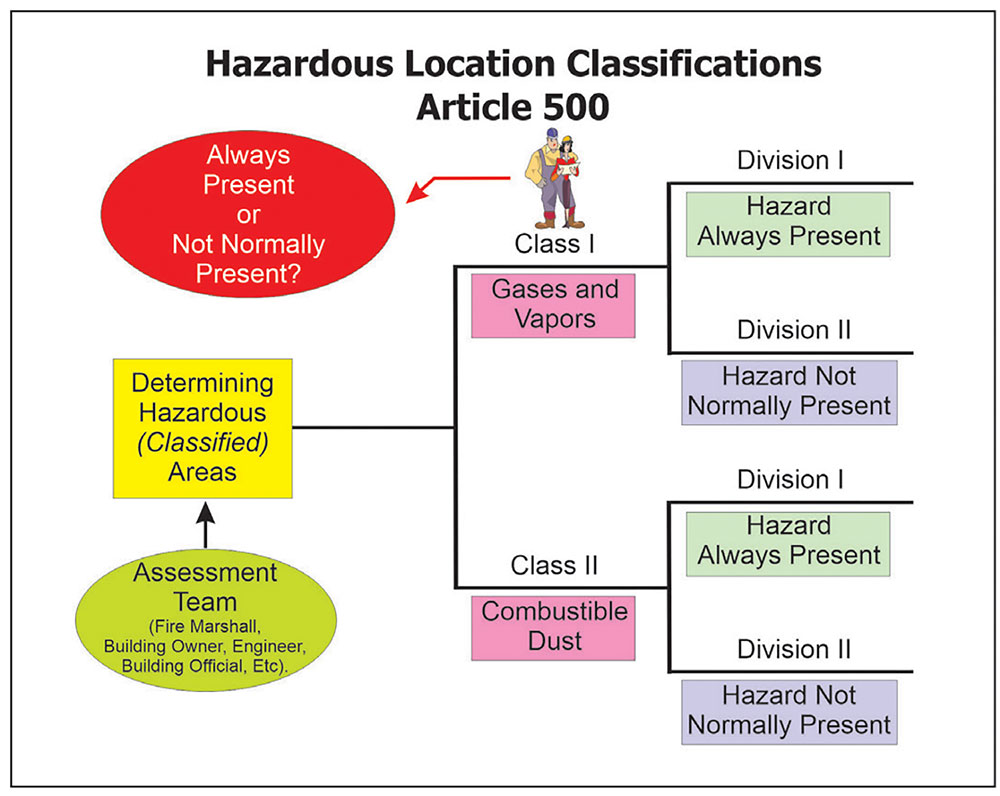
In our example shown in the figures, one of the first steps is to determine if they are dealing with a Class I (gas/vapor environment) or a Class II (combustible dust) environment. Based on their findings, the assessment team moves up the bracket to the next decision point. In our example, the assessment team decided they were presented with a Class I (gas/vapor) environment. Now the team needs to consider if the gas/vapor is “always present” or “not normally present.” They move the team to that position of the bracket and then solve other decision points until they have completed the area classification. The findings are then presented to the AHJ for his/her review and approval. This technique can be applied to all types of potentially hazardous (classified) locations to make area assessments.
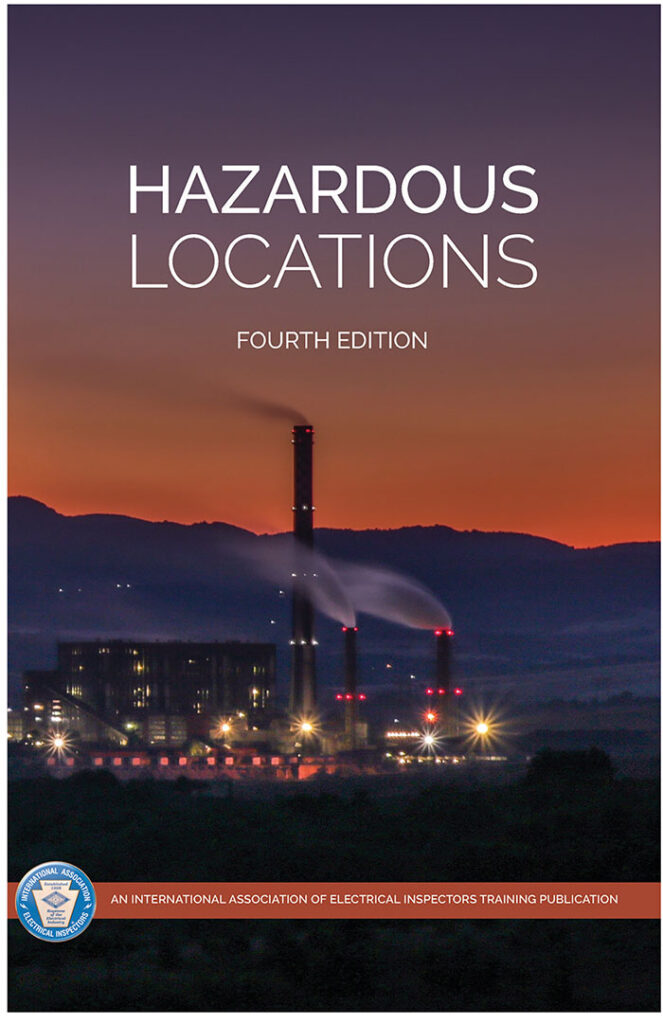
Safety Starts with You
This is a small part of working with hazardous (classified) locations. Many electricians and inspectors will never be involved in these environments. In some cases, the inspector might be involved with a local fuel station being constructed in their jurisdiction. In many of these cases, the electrical contractor used by the owner of the fuel station may specialize in this type of work. If this is the case, the electrical contractor will know a lot about the “dos and don’ts” associated with this environment.
If you want to know more information about hazardous (classified) locations, please consider the IAEI’s book Hazardous Locations as part of your library (see figure 11). You can also go to the IAEI website at iaei.org and view several short on-demand training events that will help with your understanding of this specialized electrical topic.
As always, safety starts with you. Your attitude and work ethic are important in the quest of continuing the legacy of keeping families electrically safe. When it comes down to it, we are all members of a family. I hope all of you consider the IAEI as part of your electrical professionals’ family.

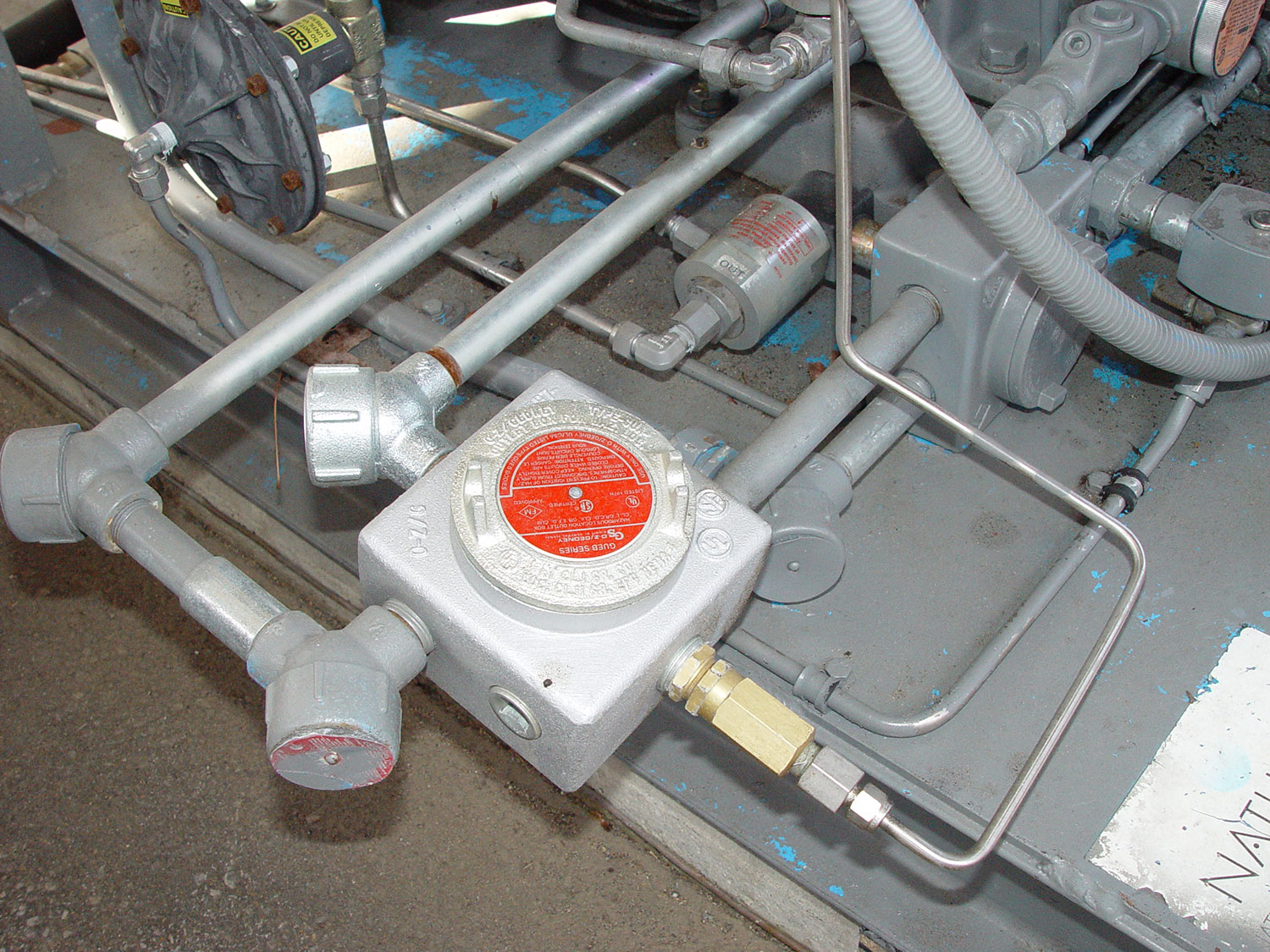






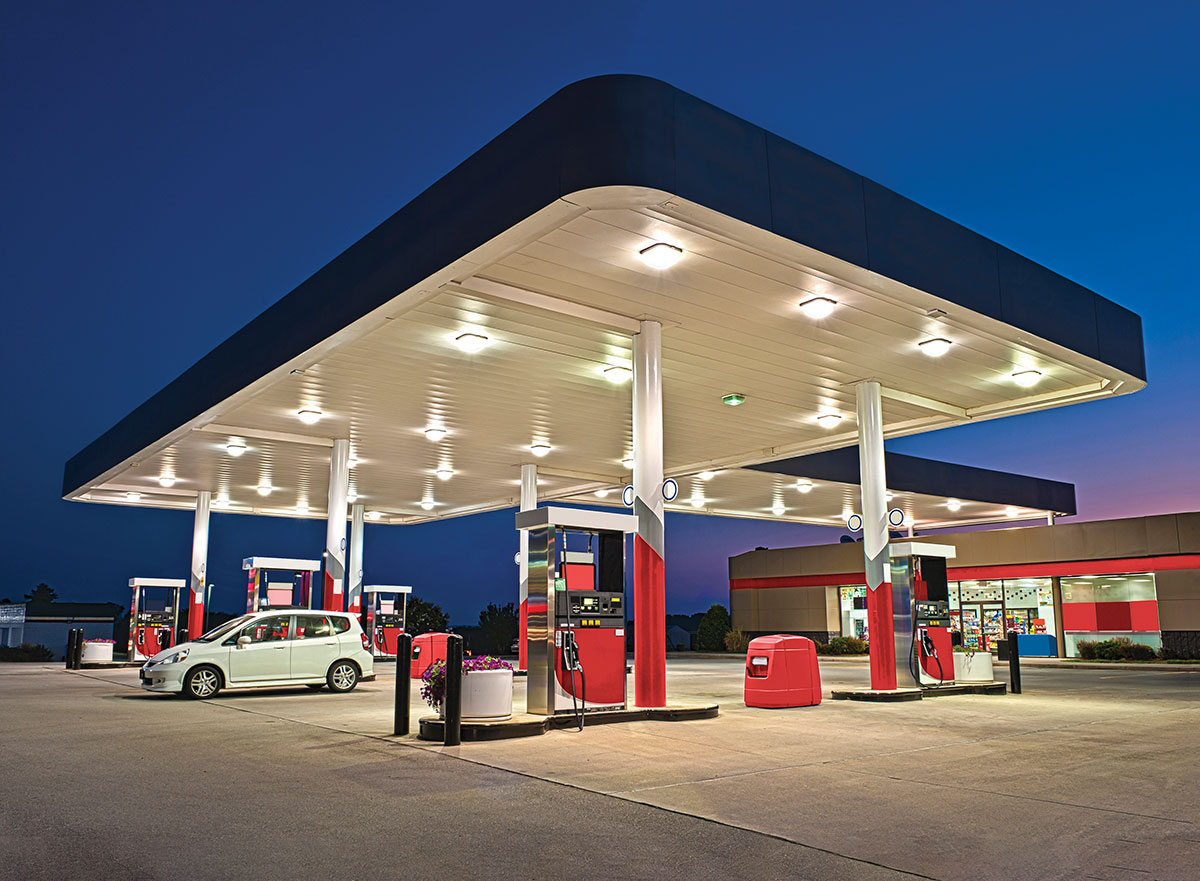
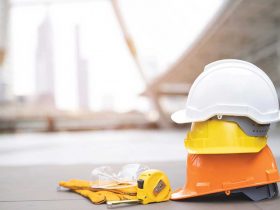

Find Us on Socials